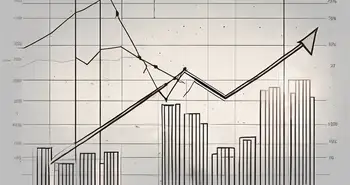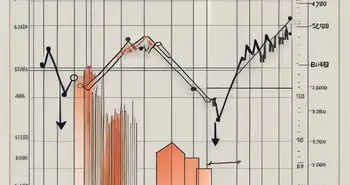The Concept of Asymmetric Information Economics

As an expert in the field of economics, I am always fascinated by the intricate workings of the market and how information plays a crucial role in shaping economic outcomes. One such phenomenon that deserves our attention is the concept of asymmetric information, which has far-reaching implications for the efficiency and stability of markets.
Understanding Asymmetric Information
Definition and Basic Principles
Asymmetric information refers to a situation where one party in a transaction possesses more information than the other party. In other words, there is an imbalance of knowledge between buyers and sellers, lenders and borrowers, or employers and employees. This lack of information symmetry can lead to market failures and suboptimal outcomes.
To better understand this concept, let's consider a simple example. Imagine you are selling a used car, and you know that the vehicle has some hidden mechanical issues. However, the buyer is unaware of these problems. In this scenario, you have more information about the car's true condition, giving you an advantage over the buyer.
The Role of Asymmetric Information in Economics
Asymmetric information is prevalent in various economic transactions and can have significant consequences for market efficiency. One of the key effects of this imbalance is adverse selection, where the presence of hidden information leads to a distorted pool of participants in the market.
For instance, in the context of insurance markets, individuals with a higher risk of filing claims may be more likely to seek coverage. This selection bias can result in higher premiums for everyone, as insurers must compensate for the increased likelihood of paying out claims.
Moral hazard is another problem arising from asymmetric information. It occurs when one party alters their behavior in a way that increases the risk for the other party, once an agreement or contract has been established. For example, an insured individual might engage in riskier behavior since they know that the insurance company will bear the financial consequences in case of an adverse event.
Furthermore, asymmetric information can also have implications for the labor market. Employers often possess more information about job opportunities, working conditions, and compensation structures than potential employees. This information asymmetry can lead to unequal bargaining power, where employers may exploit their advantage to offer lower wages or unfavorable working conditions.
Moreover, in financial markets, asymmetric information can contribute to market inefficiencies. Investors with superior information may engage in insider trading, taking advantage of their knowledge to make profitable trades at the expense of uninformed investors. This can undermine the fairness and integrity of the financial system.
Additionally, asymmetric information plays a significant role in the healthcare industry. Patients rely on the expertise of healthcare providers to make informed decisions about their treatment options. However, doctors and other medical professionals possess far more knowledge and expertise, creating an imbalance of information. This can lead to situations where patients may not fully understand the risks and benefits of certain treatments, potentially compromising their healthcare outcomes.
Overall, understanding asymmetric information is crucial for policymakers, economists, and individuals alike. Recognizing its presence and the potential consequences can help in designing better market mechanisms, regulations, and strategies to mitigate the adverse effects and promote more efficient and fair transactions.
The Impact of Asymmetric Information on Market Efficiency
Adverse Selection and Market Failure
Adverse selection, resulting from asymmetric information, can lead to market failure. When buyers have less knowledge about the quality or characteristics of a product, they may be hesitant to engage in transactions altogether, reducing overall market activity.
For instance, in the used car market, buyers may be reluctant to purchase vehicles due to a lack of trust in sellers' claims about their condition. This decreased demand can significantly impact market efficiency, resulting in reduced trade volume and decreased economic welfare.
Moral Hazard Problem
The moral hazard problem resulting from asymmetric information can also hamper market efficiency. When one party takes excessive risks knowing that another party will bear the consequences, it undermines the effectiveness of contracts and incentives.
For example, in the financial sector, individuals or firms may engage in risky investments, knowing that the government or taxpayers will bail them out in case of failure. This behavior can distort market outcomes, encourage reckless decision-making, and hinder the proper functioning of financial markets.
Asymmetric Information in Different Economic Sectors
Financial Markets and Asymmetric Information
The financial markets are no strangers to asymmetric information. Investors often face challenges when trying to assess the true value of financial assets or the creditworthiness of borrowers. This lack of transparency can contribute to market volatility and asset bubbles.
For instance, during the housing market crisis of 2008, the prevalence of mortgage-backed securities obscured the underlying risk of the loans bundled within them. This lack of information led to a mispricing of assets, ultimately triggering a global financial meltdown.
Asymmetric Information in Health Care and Insurance
The healthcare and insurance sectors are also greatly affected by asymmetric information. Patients often lack the medical knowledge to fully understand their treatment options or judge the quality of healthcare providers. Similarly, insurers may face challenges in accurately assessing an individual's health or risk profile.
Consider an individual seeking health insurance. Without full knowledge of their own health history, insurers may struggle to offer suitable coverage at fair premiums. This information asymmetry can result in either inadequate coverage or inflated prices, undermining the efficiency and accessibility of healthcare services.
Solutions to Asymmetric Information Problems
Government Intervention and Regulation
Government intervention and regulation are often employed to address asymmetric information problems. Regulatory bodies can enforce disclosure requirements and set standards for transparency, reducing information asymmetry. For example, financial regulators may require companies to provide detailed financial statements to ensure investors have access to relevant information.
Additionally, governments can enact consumer protection laws, such as truth in advertising regulations, to prevent fraudulent or misleading information. These interventions aim to level the playing field and ensure fair and transparent market conditions for all participants.
Role of Technology in Reducing Information Asymmetry
Technology plays a vital role in mitigating the effects of asymmetric information. The advent of the internet and advancements in data analysis have increased the availability of information, making it easier for buyers and sellers to access relevant data.
For example, online review platforms allow consumers to share their experiences with products and services, empowering others with more information for making informed decisions. Similarly, in financial markets, algorithmic trading and big data analytics help investors process vast amounts of information and make more informed investment decisions.
Future Implications of Asymmetric Information
Asymmetric Information in the Digital Age
In our increasingly digital world, the issue of asymmetric information takes on new dimensions. Information is readily available, yet the challenge lies in distinguishing accurate and reliable data from misinformation and fake news.
Cybersecurity is another area where asymmetric information poses a significant threat. Hackers and cybercriminals often possess more knowledge about vulnerable systems than those defending against cyber attacks, creating a power imbalance that can lead to data breaches and other security incidents.
Asymmetric Information and Global Economic Stability
Asymmetric information can have broader implications for global economic stability. Financial crises, such as the one experienced in 2008, highlight the interconnectedness of financial markets and the importance of addressing information asymmetry.
To ensure greater stability, policymakers and institutions need to promote transparency, improve risk assessment methodologies, and enhance regulatory oversight. These measures can help prevent the buildup of systemic risks and reduce the likelihood of future economic downturns.
Personal Story: Having been an economist for over two decades, I have witnessed firsthand the profound impact of asymmetric information on markets. One particular case that stands out in my memory is the dot-com bubble of the late 1990s. During that time, many investors poured substantial amounts of money into internet-based companies, driven by the promise of future profits and the fear of missing out. However, as the bubble burst, it became apparent that much of the information available to investors was overly optimistic and misleading. This experience taught me the importance of critically evaluating information to make informed decisions, a lesson that has remained with me throughout my career.
FAQ
Q: What is asymmetric information?
A: Asymmetric information refers to a situation where one party in a transaction possesses more information than the other party. This lack of information symmetry can have significant consequences for market efficiency and lead to market failures.
Q: What are the key effects of asymmetric information?
A: Asymmetric information can lead to adverse selection, moral hazard, and distorted market outcomes. Adverse selection occurs when hidden information leads to a distorted pool of participants in the market, while moral hazard refers to one party altering their behavior to take advantage of another party's risk-bearing capacity.
Q: How does asymmetric information impact market efficiency?
A: Asymmetric information can hamper market efficiency by reducing market activity, distorting prices, and hindering the proper functioning of contracts and incentives.
Q: What are some solutions to asymmetric information problems?
A: Government intervention and regulation, such as disclosure requirements and consumer protection laws, can help address information asymmetry. Additionally, technology plays a crucial role in reducing information asymmetry by increasing access to relevant data and facilitating informed decision-making.
Q: What are the future implications of asymmetric information?
A: In the digital age, distinguishing accurate information from misinformation becomes increasingly challenging. Additionally, addressing asymmetric information is crucial for global economic stability, as systemic risks and financial crises can result from information imbalances.
In conclusion, understanding the concept of asymmetric information is essential for comprehending the complexities of economics. The impact of this phenomenon resonates in various sectors, from financial markets to healthcare and insurance. By addressing information asymmetry through government intervention, regulation, and technological advancements, we can strive for more efficient and transparent markets, fostering economic stability and prosperity for all.
As we navigate the complexities of asymmetric information in economics, the importance of transparency and access to reliable data becomes increasingly clear. Morpher.com stands at the forefront of this new era, offering a trading platform that embodies the principles of clarity and fairness in the market. With its zero-fee structure, infinite liquidity, and innovative use of blockchain technology, Morpher empowers investors to make informed decisions without the traditional constraints. Whether you're interested in stocks, cryptocurrencies, or niche markets, Morpher provides the tools you need to trade with confidence. Sign Up and Get Your Free Sign Up Bonus today to experience a trading platform that's as invested in your success as you are.

Disclaimer: All investments involve risk, and the past performance of a security, industry, sector, market, financial product, trading strategy, or individual’s trading does not guarantee future results or returns. Investors are fully responsible for any investment decisions they make. Such decisions should be based solely on an evaluation of their financial circumstances, investment objectives, risk tolerance, and liquidity needs. This post does not constitute investment advice.

Painless trading for everyone
Hundreds of markets all in one place - Apple, Bitcoin, Gold, Watches, NFTs, Sneakers and so much more.

Painless trading for everyone
Hundreds of markets all in one place - Apple, Bitcoin, Gold, Watches, NFTs, Sneakers and so much more.









